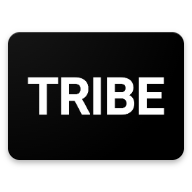Relocating to Canada is a dream for many, but the costs involved can sometimes make it feel out of reach. What if we told you that with careful planning and the right strategy, you can achieve this goal for free or at a significantly reduced cost? This guide outlines practical steps to turn your dream of moving to Canada into a reality without breaking the bank.
Step 1: Research Free or Low-Cost Immigration Programs
Canada offers several immigration pathways, many of which have minimal costs or can even be free if approached correctly. The key is understanding these programs and aligning them with your qualifications:
- Express Entry: This is the most popular route for skilled workers. While application fees exist, there are ways to minimize costs, such as applying during promotional periods or through third-party funding opportunities.
- Provincial Nominee Programs (PNPs): Each province in Canada has its own immigration program, some of which waive fees for applicants who meet specific criteria. Look into provinces like Saskatchewan, Manitoba, and Nova Scotia for affordable options.
- Atlantic Immigration Program (AIP): This program targets workers willing to settle in Atlantic Canada (New Brunswick, Newfoundland and Labrador, Nova Scotia, and Prince Edward Island). Many employers in these provinces sponsor applicants, covering visa-related expenses.
Step 2: Secure a Job Offer with Sponsorship
A job offer can significantly reduce or even eliminate your relocation costs. Canadian employers in high-demand industries, such as healthcare, IT, construction, and agriculture, often sponsor skilled workers. Here’s how to secure one:
- Use Government Job Boards: Websites like Job Bank Canada list verified openings from employers actively seeking foreign workers.
- Leverage Networking Platforms: LinkedIn is an excellent tool for connecting with Canadian employers. Join industry-specific groups and actively engage with recruiters.
- Attend Virtual Job Fairs: Many Canadian companies host online job fairs targeting international talent.
A valid job offer not only strengthens your visa application but can also cover your application fees and even travel costs in some cases.
Step 3: Apply for Fully Funded Scholarships (For Students)
If you’re considering studying in Canada, numerous fully funded scholarships can cover your tuition and living expenses. Here are some top programs to consider:
- Vanier Canada Graduate Scholarships: Designed for doctoral students, this scholarship covers tuition, living expenses, and research costs.
- Canada-ASEAN Scholarships: Targeting students from ASEAN countries, this program provides funding for short-term study or research.
- University-Specific Scholarships: Many Canadian universities offer full scholarships to international students based on merit. Examples include the Lester B. Pearson International Scholarship at the University of Toronto and the Karen McKellin International Leader of Tomorrow Award at the University of British Columbia.
Step 4: Utilize Free Resources for DIY Applications
Hiring immigration consultants can be expensive, but the good news is you don’t need them. Canada’s immigration system is straightforward, and plenty of free resources can help you complete your application:
- Government Websites: The official Immigration, Refugees, and Citizenship Canada (IRCC) website provides step-by-step guides for all immigration programs.
- Online Tutorials: Platforms like YouTube have free videos from successful applicants who share tips and tricks for completing forms and preparing documents.
- Immigrant Support Groups: Join online communities on Facebook, Reddit, or WhatsApp where immigrants share advice and resources.
Step 5: Look for Sponsorship Programs
Certain Canadian programs allow organizations, employers, or even individuals to sponsor your relocation. These sponsorships often cover your visa fees, flight tickets, and even initial settlement costs. Some key options include:
- Family Sponsorship: If you have relatives in Canada, they can sponsor your application under the Family Class program.
- Employer Sponsorship: Many employers in rural or less populated regions offer sponsorships to attract workers.
- Community Sponsorship: Some Canadian communities participate in programs like the Rural and Northern Immigration Pilot (RNIP), which sponsors skilled workers to settle in smaller towns.
Step 6: Explore Refugee or Humanitarian Pathways
If you’re fleeing persecution or seeking asylum, Canada offers refugee programs that can cover your relocation costs. While this pathway is specific to certain circumstances, it’s an important option for those in need.
Step 7: Plan Your Finances Wisely
Even if you’re targeting free programs, there may still be some initial costs, such as document processing or language tests. Here are ways to manage them:
- Save in Advance: Start saving early for essential fees like the IELTS exam.
- Apply for Fee Waivers: Some provinces and organizations offer waivers for low-income applicants.
- Crowdfunding: Platforms like GoFundMe can help you raise funds for any unavoidable expenses.
Step 8: Stay Informed About Immigration Updates
Canadian immigration policies change frequently. Stay updated by:
- Subscribing to newsletters from the IRCC.
- Following immigration lawyers or consultants on social media who share free insights.
- Joining forums where applicants discuss the latest changes.
Final Thoughts
Relocating to Canada for free or at a low cost requires thorough research, persistence, and strategic planning. By leveraging the right immigration programs, securing sponsorships, and using free resources, you can make your dream a reality. Remember, the key is to start early, stay organized, and remain proactive. Canada’s doors are open — all you need is the right key to unlock the opportunity!



